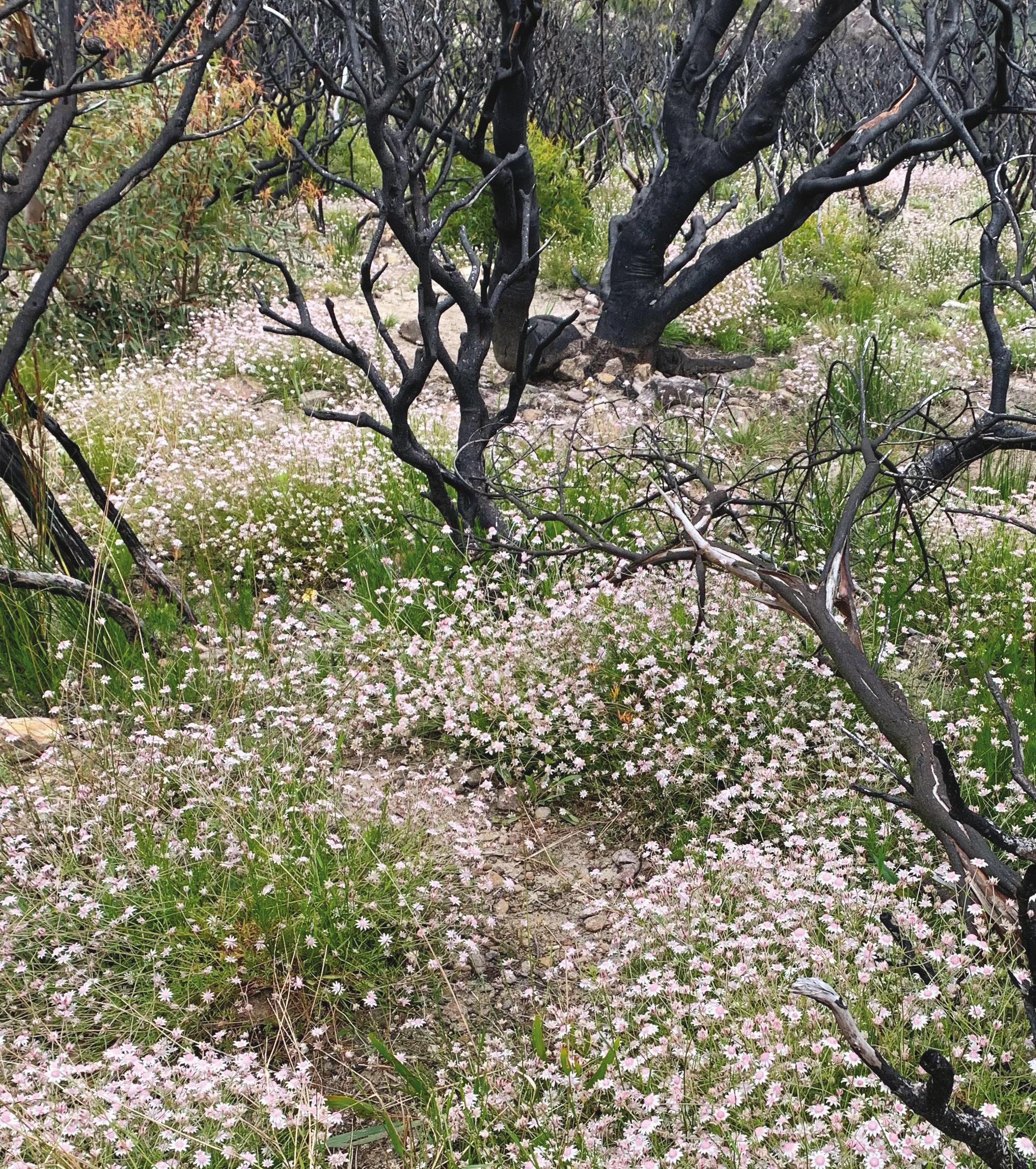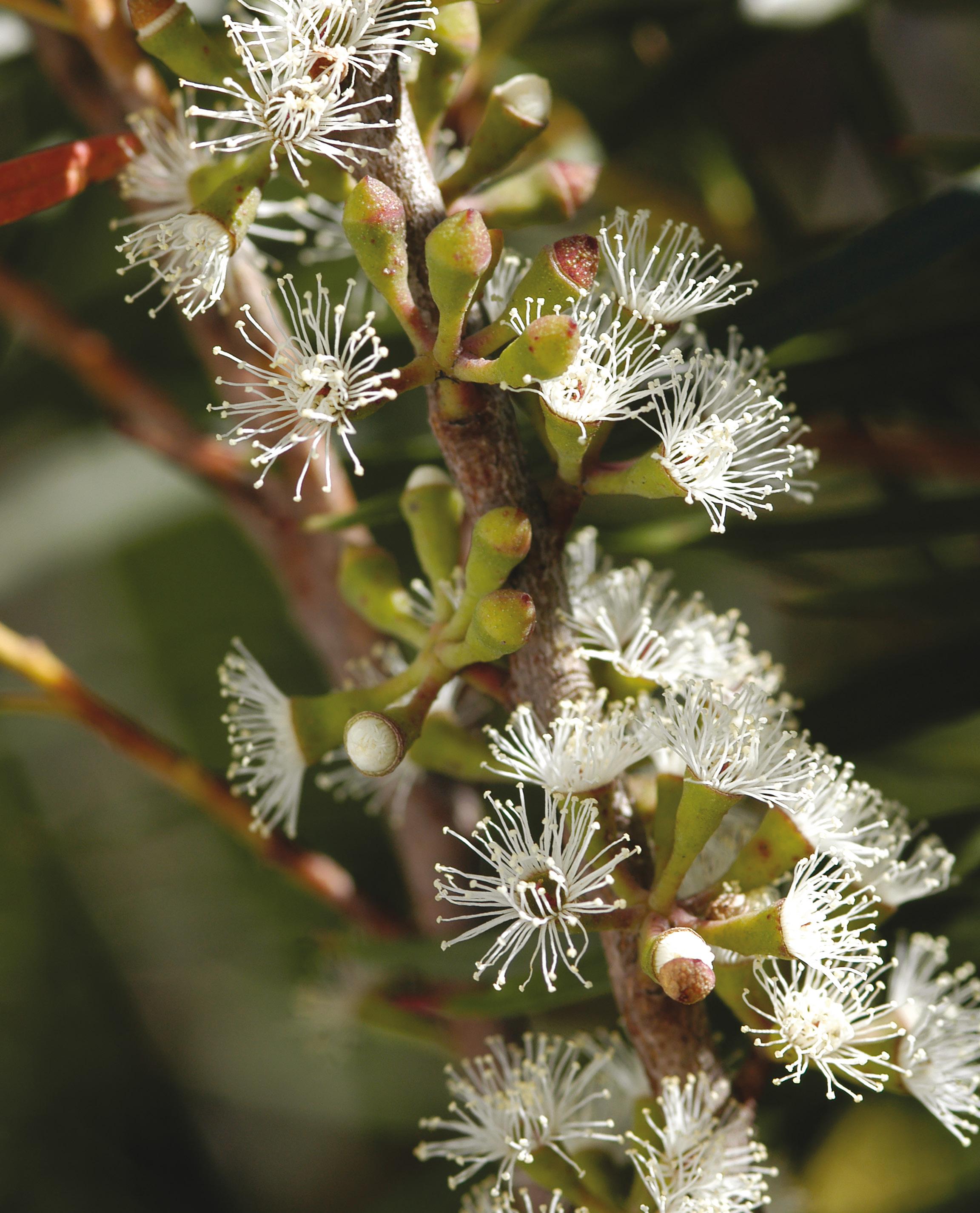
5 minute read
Restore and Rewild
RESTORE AND REWILD UNDERGOES A RETHINK
NEW INSIGHTS INTO GENETIC VARIABILITY ARE HELPING TRANSFORM THE WAY WE APPROACH NEW PLANTINGS AND HABITAT RESTORATION. BRETT SUMMERELL REPORTS.
Advertisement
Over the summer period one rarely seen Australian became something of a media celebrity. In case you missed it, I’m talking about the pink flannel flower, Actinotus forsythii, which flowered in profusion throughout parts of the Blue Mountains, Southern Highlands and a little further afield.
This species is what is known as a fire ephemeral, which means it requires bushfires followed by good rainfall for its seed to germinate, grow and then flower in masses. The past 12 months have of course delivered these conditions by the bucket-load, which is why we were treated to large areas covered by these wonderful pink flowers.
This phenomenon highlights the amazing capacity of many species of plants to adapt to the diverse conditions they may face and their ability to wait – in some cases decades – until the right combination of environmental factors is provided. The capacity of species such as the fire ephemerals to cover large areas and reproduce prolifically is one of the wonders of nature and is an inspiring sight to experience.
Despite this in-built resilience, the combined impacts of land-clearing, invasive species and climate change are pushing many plant species on the slippery path towards extinction. At a recent symposium on the fungal disease Myrtle Rust, for instance, plant scientists were presented with evidence of 16 rainforest trees that are faced with imminent extinction – and this only 11 years after the pathogen was introduced into Australia.
While we are starting to recognise the need to restore and rewild the bush, there is still some debate how we best go about it, and how we ensure that our efforts take into account a changed and changing environment.
A PROVEN SOLUTION It’s clear that planting trees, restoring habitats and rewilding cleared bushland will all be important elements in our efforts to mitigate the impact of climate change. Trees have the capacity to store carbon in their trunks, moderate temperature and stabilise, at least to a certain extent, climate over large areas.
Bioinformatic models are helping to optimise pollination
Tree planting is a proven solution that is also the most adaptable technique across socio-economic gradients. In addition, it is not restricted to rural communities – increased canopy density in urban areas helps reduce the ‘heat island effect’ and makes suburbs more liveable, particularly on days of intense heatwaves. Across many parts of the world, including Sydney, there are now strong government- and communityled programs to increase the number of tree plantings that occur and to make green infrastructure an essential component of new developments.
The challenge is to ensure these plantings are sustainable.
For a tree to make a significant contribution to mitigating climate change it will need to survive long enough to produce wood and to store carbon in its trunk and branches. To provide habitat it needs to become mature enough to develop hollows and branches for nests. This requires planning for decades into the future – not necessarily an approach that comes easily to governments and government agencies.
Given that, is it enough just to plant trees in our cities? Can we achieve something more transformative?
PLANTING SMARTER There is an opportunity to not only modify urban environments but to also develop plantings that will be more adaptable to being self-sustaining as they mature.
We are now generating data in our innovative project, Restore and Renew, on the genetic variability that occurs in species across their full geographic range. And we can use that data to select seed that will help us grow diverse selections of individuals in projects that could range in size from a small council carpark to a habitat restoration initiative spread across hundreds or even thousands of hectares.
If the selection of seed used to plant out an area is not diverse enough then there is a risk, particularly with species like eucalypts, of inbreeding depression. This is a situation where the progeny of related individuals have reduced biological fitness to respond to external stresses such as invasive pests, diseases and climatic change that brings higher temperatures or drought. Our aim should be to ensure that for each of the species planted we include a component that is genetically diverse so that the risk of this happening is reduced, and each new restored ecosystem is resilient enough to respond to challenges thrown at it.
As I’ve already mentioned, this approach could be applied to even the smallest of plantings – areas like a small garden bed in a local suburb or even in a rooftop planting in the centre of the CBD. We could in these situations use locally threatened species for which we have generated genomic information (as we are doing regularly now for the NSW Government’s Saving Our Species program), select propagation material that contains as much of the genetic variability for that species and plant it together in the one locality.
We even have bioinformatic models developed to guide us on which individuals should be closer to one another to achieve the most efficient exchange of genetic material. This will allow pollinators to transfer the genes – in the form of pollen – across the group of plants so that the seed that is produced is as genetically diverse as is possible. This then provides a resource of diverse seed – a seed orchard - that can be used by community groups to plant back out in the environment with the full knowledge that genetically it will have the best chance of adaptation and survival. The opportunities to do this across the city and regions could make a huge difference to the resilience of these species and enhance their survival in their natural ecosystems.

PLAYING A LONG GAME Ultimately, we need to recognise that we should, wherever possible, be planting to create ecosystems that can both survive and be self-sustaining well into the future.
We have the technology now to guide this process, but it will require a change in mindset and a recognition that getting trees in the ground is not the endgame, it is just the beginning.
We need to plan for what the mature planting will look like, how it will provide options for future resilience, and for self-sustainability far into the future. This will be a challenge, but the rewards are very much worth the effort – we may not be around to reap them, but future generations will benefit from this type of transformative thinking.
Pink Flannel Flowers in the Blue Mountains
JOHN
Eucalyptus cunninghamii Some species of eucalypts are at risk of inbreeding depression


